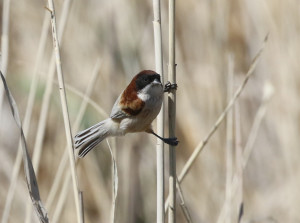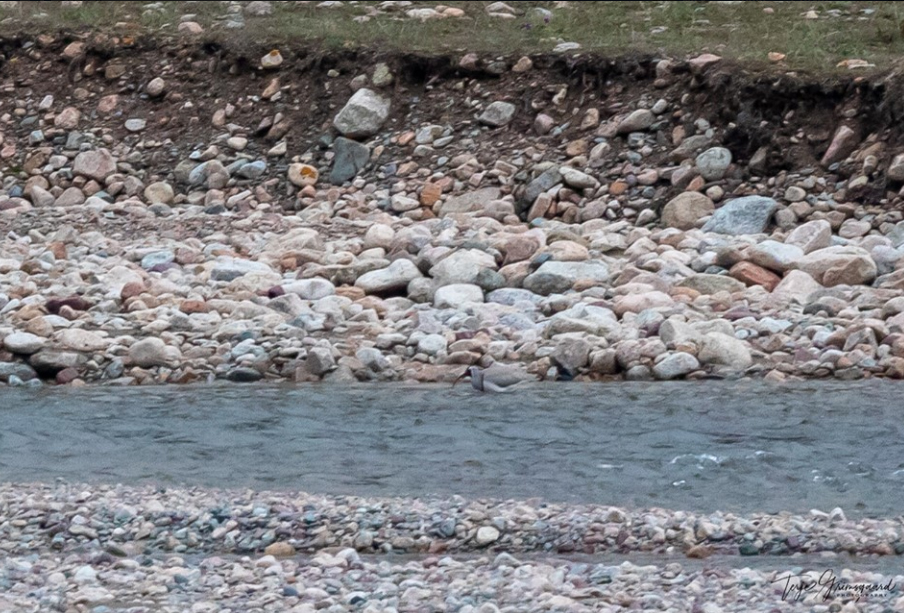
My 2019 birding tour to Kazakhstan was one of the best I have led over the last few years; incredible landscapes and non-stop fantastic birds made it hard not to enjoy every moment. Species such as Asian Crimson-winged Finch, Eversmann’s Redstart, White-headed Duck, Black Lark, White-winged Lark, Sociable Lapwing, White-winged Woodpecker, White-capped Bunting, Asian Desert Warbler, Pallid Harrier, Pine Bunting and Upland Buzzard attest to the quality of the birding we were treated to from the first until the last day of the tour, yet none of these amazing birds made the group’s final top five species of the trip.
As with all the trips I lead I asked all participants, on the final night, to rank their top five birds of the trip. We flicked through our copies of Birds of Central Asia to remind ourselves of all the birds we saw and then we allocated a score 1-5 to the species we each chose and added up the scores from all the birds voted for. The following are our top five species from Kazakhstan 2019.
If you would like to join me on a birding trip in Kazakhstan take a look at the dates, itinerary and all the details of my next tour – Kazakhstan Birding Tour.
This was always a highly-anticipated bird but that alone does not guarantee a species being ranked highly at the end of the tour. When we saw Himalayan Snowcock our morning started with a whole load of other high altitude specialities including Guldenstadt’s Redstart, Altai Accentor, Brown Accentor and Brandt’s Mountain Finch to name a few. The weather started out clear but clouds moved in and snow flurries began with the Tien Shan mountains appearing and then disappearing between the clouds in an incredible landscape. As we walked along a mountain trail the distant call of Himalayan Snowcock was heard but at this point it sounded so far away that our hopes of seeing it were small. Still we walked closer to the origin of the sound and played the call at the same time. After a while we could hear at least three birds calling but it was really hard to place exactly where they were coming from. We got as close as we could and began scanning the mountain side with binoculars and telescopes. The calling seemed to get closer but with the snow coming down around us we just could not spot any of the three birds that we could hear. After 40 minutes or so, we started to pinpoint where the calls were coming from and suddenly one was spotted as it emerged from behind a rock. Incredible.
The next thing was to ensure that everyone got onto the bird and as I was setting up everyone’s ‘scopes on the bird suddenly others emerged and could be seen even with the naked eye as the three birds all converged. We were the able to watch them as they called, interacted and then began to feed on an area where vegetation poked through the snow layer. Fantastic views of a fantastic bird in a very atmospheric situation.
Ibisbill is such an iconic species that it was always likely to be in our top 5 birds of the trip. As you can see from Terje Grimsgaard’s photo we did not get quite as close as we would have liked but once again our overall experience was very enjoyable. With clouds moving in, threatening to shut visibility down we had a limited amount of time to find our Ibisbill so when we found it we were all excited. We walked as close as we could get to enjoy watching it forage in the river for around 20-30 minutes; a superb bird.
This species was one that had not been discussed much along the way, as most of us were aware that previous stakeouts for Black-headed Penduline Tits had turned up empty over recent years, so it was with some surprise that we were told that we were at a site where they had been seen only a year ago. With a strong wind it did not seem like a good time to look for reedbed birds but as soon as a little call playback was done this smart bird came charging out at us. Not only was it a surprise to see it so easily but we were surprised by what a stunning little bird it was. This combined with extremely close views made it an instant favourite of the group and we all walked away from this one with a big smile on our faces.
Since returning from Kazakhstan a little research on this bird shows that it is perhaps not all it first seemed. This bird is currently listed by HBW as the ssaposhnikowi race of Black-headed Penduline Tit with the following note;
Race ssaposhnikowi believed probably to have originated as hybrid between nominate race of present species and race jaxarticus of R. pendulinus, although neither parent found within current range of ssaposhnikowi; this race is very variable, some being dark-hooded like nominate, others having chestnut crown and nape like R. pendulinus caspius, and some are intermediate; consequently, perhaps best not recognized.
White-browed Tit-warbler got into our top five on sheer visual impact alone, what other bird has this incredible combination of blues and magenta? The setting for finding this species was really good too, walking around a high mountain valley having already located Sulphur-bellied Warbler, Himalayan Rubythroat and White-winged Grosbeak a few minutes beforehand. We detected this little gem by call as it was rummaging around in dense undergrowth but patience paid off and good views were had by all. I must confess that this bird was my number one choice based on the view I had when I was alone for a few days in the mountains pre-trip and that was when this photo was taken – Birding & Hiking near Shymbulak.
Saxaul Sparrow was a surprise addition to our top five birds but we had extremely good views of several of these very smart little birds. This species came shortly after our experience with Black-headed Penduline Tit but in two completely different habitats; firstly at a bus stop in some very dry country and then in some very open, mature dry woodland. Everyone agreed that the illustrations in the field guide did not do justice to the male of this species and nor does this photo. Saxaul Sparrow is a really well-marked bird and, as with many sparrows, full of character.
So, these were our top 5 birds of the 2019 Kazakhstan tour and most of them featured as much because of the experience we had with them as their rarity value. I am sure that the top 5 will be different the next tour I lead to Kazakhstan, please join me on the next one for some really superb birding and scenery – Kazakhstan Birding Tour.


 June 25th, 2019
June 25th, 2019  Nick
Nick 




 Posted in
Posted in  Tags:
Tags: 









